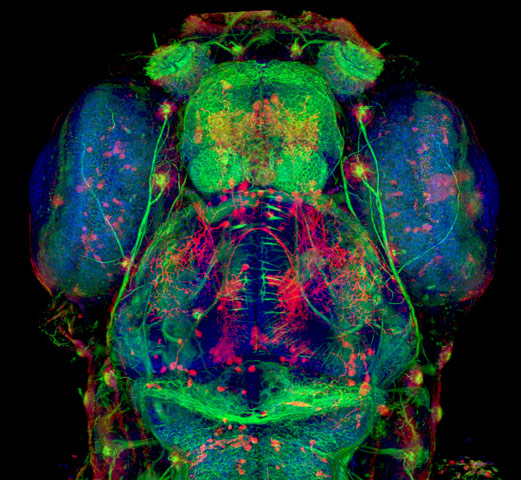The ‘inner world’ of things we consider unattractive or even disgusting, can be stunning—entrants of the Nikon Small World Photomicrography Competition prove it. To see this beauty, we just have to zoom in. This year, the micro-universe was explored by hundreds of entrants, who submitted more than 2,200 images, unlocking the secrets of the whole universe which we just can’t see with the naked eye. Each of the work was magnificent in its own way, but there had to be just one winner. Jonas King (Vanderbilt University, Department of Biological Sciences, Nashville, USA) with his image of 100 times magnified Anopheles mosquito’s heart colored with fluorescence technology scooped the $3,000 first prize.
Image Courtesy: Jonas King, Anopheles gambiae
Started in 1974, the Nikon Small World contest is the oldest, largest and most respected competition of its kind, which is encouraging scientific researchers who observe the world through microscope to share what they see with the rest of us. For example, King captured his vibrant image while conducting studies on how mosquitoes carry and transmit pathogens including malaria.
Image Courtesy: Hideo Otsuna, 5-day old zebrafish head
The top-5 of this year’s winning works include the above mentioned one, Dr. Hideo Otsuna‘s photo of a five-day old zebrafish head, Oliver Braubach‘s still of zebrafish olfactory bulbs, Riaccardo Taiariol‘s photo of a wasp nest, and Viktor Sykora‘s image of a bird of paradise seed. The winners were announced on October 13, and now Nikon is on the lookout for new microphotography artworks—the new submission period will close on April 30. The best images of the 36th competition will be on display during a national museum tour and will also be featured in a full-color calendar. To see the images, visit the www.nikonsmallworld.com/gallery.
Image Courtesy: Oliver Braubach, Zebrafish olfactory bulbs
«It is a privilege to honor some of the world’s foremost researchers and photomicrographers for their amazing work with Nikon Small World. We are thrilled that we continue to receive images that awe and surprise us every year—ranging from everyday household items to microscopic specimens used for science’s most pressing research. This competition truly demonstrates the fun of science as well as the importance of the many microscopic techniques and processes in use today,» stated Eric Flem, communications manager at Nikon Instruments.
Image Courtesy: Riccardo Taiariol, Wasp nest
Image Courtesy: Viktor Sykora, Strelitzia reginae




